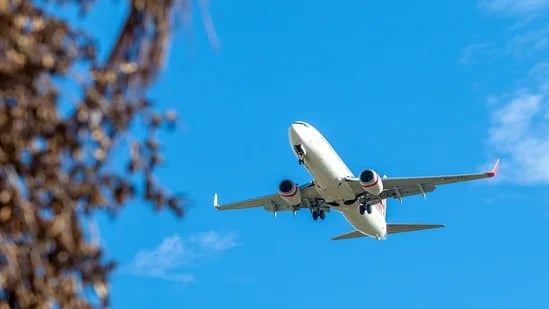Plane with 50 people on board goes missing in Russia
On a quiet Thursday morning, July 24, 2025, a heartbreaking tragedy unfolded in Russia’s remote Amur region. An Antonov An24 passenger plane, carrying around 49 people, vanished from radar near Tynda, a small town close to the Chinese border. Operated by Angara Airlines, based in Siberia, the plane was on a routine flight from Khabarovsk to Tynda, with a brief stop in Blagoveshchensk. Built in 1976, this Soviet-era aircraft was attempting to land for the second time at Tynda Airport in tough weather when it lost contact with air traffic control. What followed was a desperate search and a grim discovery that left families, communities, and a nation in grief.
INTERNATIONAL
Thinkbrief
7/23/20253 min read


The plane was carrying 43 passengers, including five children, and six crew members, according to regional governor Vasily Orlov, though some local reports suggested a slightly lower number, around 40. As soon as the plane went silent, Russia’s aviation authority, Rosaviatsiya, launched a massive search effort. Teams on the ground, joined by an Mi8 helicopter, combed through the rugged, forested landscape around Tynda. Hours later, they found the wreckage about 15 kilometers from the airport, on a wooded slope where the plane’s fuselage was burning. Social media shared haunting images, unverified but vivid, showing debris scattered across the forest, captured from a helicopter circling above.
Russian news outlets like Interfax and TASS reported the devastating news: the plane was destroyed on impact, and there were no survivors. The loss hit hard, and emergency services worked quickly to respond. Governor Orlov, posting on Telegram, promised that every resource was being used to find the plane and understand what happened. Russia’s Investigative Committee for Transport opened a criminal case to dig into the cause, a standard step but one that carried the weight of so many lives lost.
The Antonov An24, designed in the 1950s, has been a reliable workhorse for Russia’s regional flights, especially in far-off places like Amur, where rough terrain and unpredictable weather are part of life. But this plane was nearly 50 years old, and its age has sparked tough questions about whether these older aircraft are safe enough for today’s skies. Russia’s aviation history has seen other tragedies, like the 2021 Antonov An26 crash in Kamchatka that took 28 lives. The An24 is known for handling harsh conditions, but its continued use has people wondering if maintenance and oversight are keeping up.
The weather that morning didn’t help. Low clouds and rain cloaked Tynda, making visibility poor and landing tricky. Early reports pointed to possible mistakes by the crew during the second landing attempt, but there was no distress call, which makes the suddenness of the crash even more unsettling. Was it human error, a mechanical failure, or something else? Without a distress signal, it seems the crisis unfolded too fast for the crew to react. Investigators will likely look closely at the plane’s maintenance history, the pilots’ decisions, and how air traffic control managed the situation.
This crash has put a spotlight on the challenges of flying in Russia’s remote regions. Places like Amur depend on planes to connect isolated towns, but relying on aging aircraft raises concerns. Past incidents, like the one in Kamchatka, point to deeper issues, from spotty oversight to the economic realities that keep older planes flying. For the families of those on board, these debates feel distant compared to their loss, but they’re a reminder of the stakes.
Rescue teams worked tirelessly to reach the crash site, battling the dense forest and the fire still burning through the wreckage. The Mi8 helicopter was key in spotting the site, given how hard it was to access. As news spread, tributes came from local leaders and residents, their words heavy with sorrow. The story reached far beyond Russia, with news outlets like Reuters and The Independent covering every detail.
Now, as investigators work to piece together what happened, they’ll likely rely on the plane’s black box, if it’s found intact. It could hold answers about whether the crash was caused by human error, a mechanical issue, or the weather. For now, the focus is on supporting the families and preventing future tragedies. This crash is a painful reminder of the risks of regional flights in areas where resources are thin. It also highlights the human toll of challenges that have lingered in Russia’s aviation system for years. This tragedy marks a dark moment in Russian aviation. As the nation grieves, there’s hope that this loss will push for changes to make the skies safer for everyone.